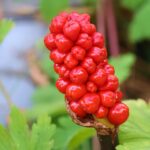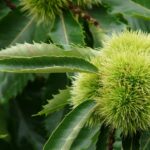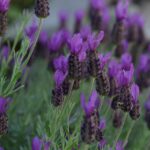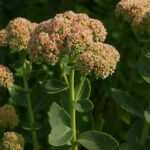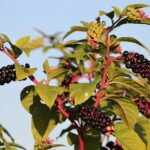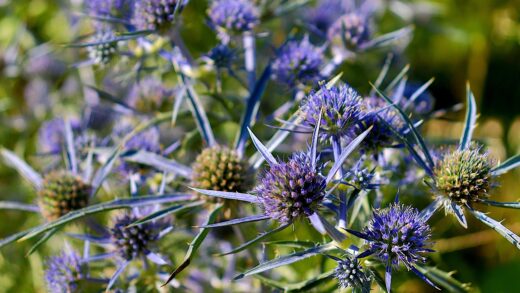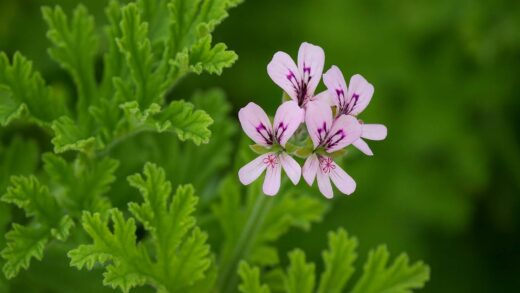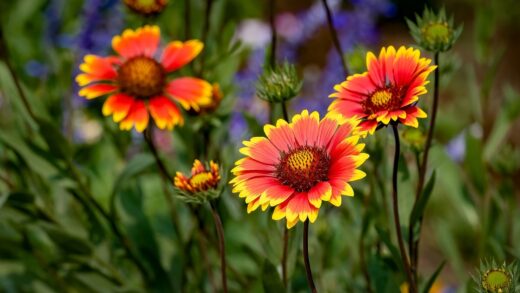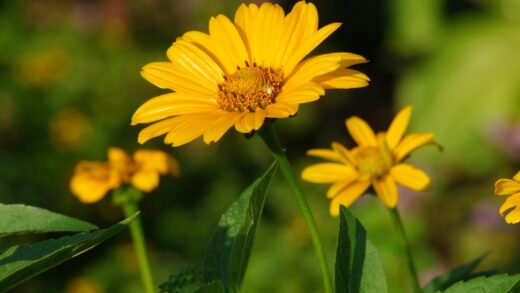American pokeweed is a highly adaptable plant when it comes to light requirements, demonstrating a versatility that allows it to thrive in a wide spectrum of conditions, from full, direct sun to considerable shade. This flexibility makes it a valuable plant for solving problems in difficult parts of the garden where other, more demanding plants might struggle. However, the amount of light the plant receives will have a direct and significant impact on its growth habit, size, and overall appearance. Understanding this relationship is key to siting the plant effectively to achieve your desired aesthetic and to manage its growth in a predictable way. A plant grown in full sun will look quite different from one grown in the dappled light of a woodland edge.
In its ideal and natural habitat, American pokeweed often grows in clearings, along the edges of forests, or in open fields where it can receive a substantial amount of direct sunlight. In these conditions, the plant tends to grow more compactly and sturdily. The stems will be thicker, the distance between the leaves (the internodes) will be shorter, and the plant will generally be more upright and self-supporting. Furthermore, the characteristic reddish-purple coloration of the stems is often much more intense and vibrant in plants that are exposed to high levels of sunlight. This light-induced pigmentation is a desirable ornamental trait for many gardeners.
Conversely, when grown in shadier conditions, American pokeweed adopts a different growth strategy. It will stretch and reach for the available light, resulting in a plant that is often taller and more open or airy in its structure. The stems may be thinner and greener, and the overall form can be more arching and graceful. While it will still grow quite large in the shade, it may not reach the same massive, dense proportions as its sun-grown counterparts. This can be an advantage in a garden setting where a slightly less imposing and more elegant form is desired.
Ultimately, the choice of where to plant it depends on your goals. If you desire the most robust growth, the strongest stems, the most prolific flower and berry production, and the most intense stem coloration, a location in full sun is the optimal choice. If you have a shadier spot, such as beneath high-canopy trees or on the north side of a structure, pokeweed can still be an excellent choice, but you should expect a taller, more lanky, and greener plant. This adaptability is one of its greatest assets, allowing it to be used successfully in a variety of garden designs and light exposures.
Thriving in full sun
When planted in a location that receives six or more hours of direct sunlight per day, American pokeweed will perform at its most vigorous. Full sun conditions fuel the plant’s photosynthetic engine to its maximum capacity, resulting in the most rapid growth and the largest possible size for that specimen. The energy produced in a full sun environment allows the plant to develop exceptionally thick, robust stems that can better support the weight of its large leaves and heavy berry clusters, making it less likely to flop or bend in wind and rain.
More articles on this topic
Sunlight also plays a crucial role in the plant’s ornamental qualities. The intensity of the red and magenta pigments in the stems is directly correlated with the amount of sun exposure. In a full sun location, these stems can become a brilliant, eye-catching feature, providing a stunning contrast with the large green leaves. Flower and berry production will also be at its peak in a full sun setting. The plant will produce more and larger flower racemes, which subsequently leads to a more dramatic and abundant display of the dark purple berries in the autumn.
While pokeweed loves the sun, it is important to ensure that newly transplanted seedlings are properly hardened off before being placed in a full sun location. A young plant that has been started indoors or in a greenhouse can easily suffer from leaf scorch if it is moved too quickly into intense, direct sunlight. Additionally, while established plants are very drought-tolerant, even a sun-loving pokeweed can show signs of wilting on extremely hot afternoons. However, this is usually a temporary response, and the plant will typically recover overnight without the need for supplemental water.
Choosing a full sun location is the best option if you want to see the plant in its most classic and powerful form. It is the ideal situation for creating a bold, architectural statement at the back of a perennial border or as a standalone specimen. The combination of strong growth, vibrant color, and prolific fruiting makes a sun-grown pokeweed a truly spectacular and dramatic addition to the garden, embodying the raw vigor that defines the species.
Adaptability to partial shade
American pokeweed demonstrates excellent adaptability to partial shade, which can be defined as an area that receives between three and six hours of direct sunlight per day, or one that receives dappled light for most of the day. This makes it an incredibly useful plant for transitional zones in the garden, such as the edge of a woodland, along a fence line that is shaded for part of the day, or beneath the canopy of large, mature trees. In these locations, it can provide a lush, tropical feel where other sun-loving plants would fail to thrive.
More articles on this topic
In partial shade, the plant’s morphology will adapt to optimize its light-gathering capabilities. The leaves may grow slightly larger and the stems will elongate as the plant stretches to reach the light source. This results in a plant that is often taller and has a more open, airy habit compared to one grown in full sun. This can be a highly desirable trait, as the plant appears less dense and more elegant, allowing it to blend more seamlessly into a naturalistic or woodland garden setting. The red stem coloration may be less pronounced, but the overall effect is still one of lush, verdant growth.
One of the main advantages of growing pokeweed in partial shade is that it tends to require even less water. The shade provided by trees or structures reduces soil moisture evaporation and lessens the intensity of the afternoon sun, meaning the plant is less likely to experience temporary wilting on hot days. It will be almost entirely self-sufficient in terms of water once established in a partially shaded location. Furthermore, its growth may be slightly less aggressive, which can make the plant easier to manage over the long term.
Flowering and fruiting will still occur in partial shade, although the number and size of the berry clusters may be somewhat reduced compared to a plant in full sun. However, it will still produce a very respectable and ornamental display. For gardeners looking for a large, architectural perennial to fill a challenging, semi-shaded spot, American pokeweed is an outstanding candidate. Its ability to adapt and perform well in less than full sun conditions is a testament to its toughness and versatility.
Performance in deep shade
While American pokeweed is most vigorous in sun, it is surprisingly tolerant of deep shade conditions, meaning locations that receive less than three hours of direct sunlight per day. It is one of the few large, herbaceous perennials that can persist and make a statement in such low-light environments. However, its growth and appearance in deep shade will be markedly different from a plant grown in sunnier spots. Gardeners should adjust their expectations accordingly when planting it in a heavily shaded area.
In deep shade, the plant’s primary goal is survival and light capture, and its growth habit will reflect this. It will become quite elongated, or etiolated, as it stretches its stems towards any available source of light. This can result in a very tall, lanky plant with significant spacing between the leaves. The stems will likely be almost entirely green, with very little of the characteristic red pigmentation. The overall form will be much more delicate and open, and it may require staking or support from neighboring plants to remain upright, as the stems will not have the same thickness and strength.
Flower and fruit production will be significantly reduced in deep shade. The plant may produce only a few, small flower clusters, or in very dark conditions, it may not flower at all. Its energy is primarily directed towards vegetative growth—producing leaves to capture as much of the limited light as possible—rather than reproductive efforts. Therefore, if the ornamental berries are a primary reason you are growing the plant, a deep shade location is not the ideal choice.
Despite these changes, pokeweed can still be a useful plant for a deep shade garden. It can provide height and a bold leaf texture in a location where few other plants will grow to such a scale. Its ability to survive and persist in these conditions is a valuable trait. It can be used to create a green backdrop in the darkest corners of a garden, although you should not expect the same dramatic, colorful, and fruitful display that it would produce with more light.








